Vegetable
30 Vegetables That Can Be Eaten Raw
Published
4 months agoon
By
P.K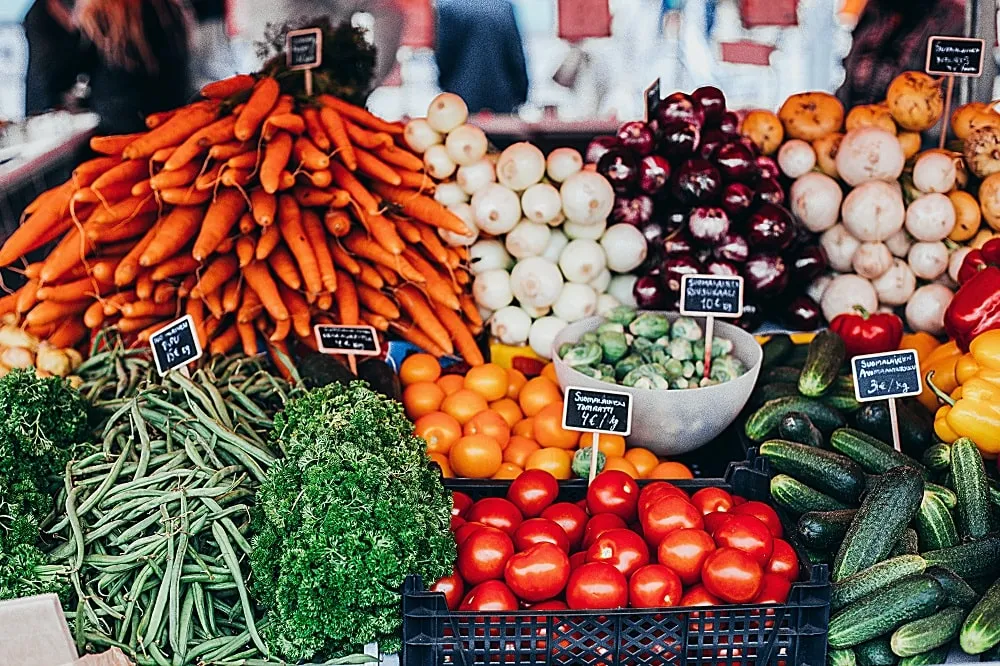
Table of Contents
ToggleVegetables That Can Be Eaten Raw
A raw food diet consists of vegetables, fruits, grains, nuts, and seeds that are eaten in their natural state. Some raw foodists abstain from all cooked foods, while others only eat foods that have not been tampered with. The raw food diet has been practiced for thousands of years by humans. Ancient cultures consumed more fruits, vegetables, and grains than are eaten today. Scientists believe that the human body is most efficient when it uses raw food because the digestive tract needs to work with enzymes that are best in a raw state. Modern diets contain many highly processed foods and refined sugars. Some researchers suggest that your body will function better by eating more raw fruits, vegetables, grains, and legumes. The list of vegetables that can be eaten raw and foods that can be eaten raw have proven benefits in boosting energy levels and mental alertness and providing a richer source of nutrients.
Benefits of raw food diet :
1. Improves immunity:
The raw food diet can help fight off infections, such as the common cold. The nutrients from consuming fruits such as oranges and apples can boost your immune system, helping you recover faster from illnesses. Eating a diet high in raw foods can also help build up your overall immunity by providing a rich supply of antioxidants that slow or prevent damage to cells in the body caused by free radicals.
2. Lower blood pressure:
Blood pressure can be lowered by consuming a diet high in raw food. Raw fruits and vegetables are rich in soluble fiber, which delays the emptying of the stomach and slows down the rate at which sugar is released into the bloodstream. This helps to keep blood sugar levels more stable. People on a raw food diet typically have lower cholesterol levels, which also contributes to lowering blood pressure.
3. Better skin:
Raw foods contain enzymes that can help improve the appearance of your skin. They also have a high concentration of flavonoids which contribute to the antioxidant level of your skin. Raw foods are great for skin repair because they provide nutrients, vitamins, and minerals that help maintain healthy and beautiful skin. The antioxidants in raw fruits and vegetables can also improve blood flow to this area by improving the elasticity of arterial walls, which increases oxygen circulation to cells in the epidermis.
4. Reduces inflammation:
The raw food diet is a way to eliminate the chemicals that may be causing inflammation in your body. Many foods contain preservatives and additives, which can cause an inflammatory response, such as migraines, asthma, and even skin rashes. The antioxidants in raw fruits and vegetables can help decrease this response.
5. Balanced weight loss:
A raw food diet helps you healthily lose weight by providing your body with essential nutrients like fiber, protein, and carbohydrates. Raw foods are rich in complex carbohydrates, which affect blood sugar levels slowly so that you do not experience sudden spikes or drops in energy levels.
The disadvantage of raw food diet :
1. Difficulty in digesting :
The raw food diet can be hard to digest for some people. Raw foods are not always easy to prepare as they need to be juiced, blanched or dehydrated and then blended to a smooth consistency before being eaten. This can take time, preparation, and dedication on the part of the eater.
2. Not regulated :
Most raw foods have undergone some process that affects the nutrients they contain. Some have been irradiated and heated, while others have been pasteurized or processed through chemicals. The labels on the foods are not always accurate, making it difficult to know what you are eating.
3. Acidic taste :
Raw fruits and vegetables can be susceptible to high acidity levels that can cause burning in the mouth. The high acidity level of certain foods can also cause them to become bitter when mixed with other foods that do not have a high enough protein content.
4. Muscle aches :
Raw food diets usually do not include sufficient amounts of fat which causes the body to become deficient in the essential nutrients needed for good muscle health. A raw food diet does not provide the necessary amounts of fat soluble vitamins and minerals.
30 vegetables that can be eaten raw :
1. Artichoke:
Artichokes are a creamy, starchy vegetable used as a soup ingredient in many cultures. It contains almost no fat or sodium and is automatically low in calories and carbohydrates, making it ideal for those on a raw food diet.
2. Asparagus:
Asparagus is a great source of iron, B vitamins, and other nutrients. It is also rich in fiber, making it an excellent choice for those following a raw food diet. One serving contains just 28 calories.
3. Avocado :
Avocados are unique fruits that can be eaten on their own or used as a vegetable because of their creamy texture and smooth taste. They are also a great source of fiber and healthy fats, making them ideal for those who prefer a raw food diet.
4. Broccoli :
Broccoli is a dark green vegetable and one of the most commonly eaten vegetables in many cultures worldwide. It is low in calories and fat, making it ideal for those on a raw food diet.
5. Brussels Sprouts:
Brussels Sprouts are a high fiber, high-nutrient vegetable. They contain more vitamin C than any other vegetable, making them ideal for people seeking to increase their vitamin C intake.
6. Cabbage:
Cabbage is considered a cruciferous vegetable because it contains sulphur compounds called glucosinolates that prevent cancer cells from forming and help control cholesterol levels by improving the efficiency of liver metabolism.
7. Cauliflower:
Cauliflower is a member of the cruciferous vegetable family and has been linked to preventing certain types of cancer. It contains a large amount of vitamin C and good dietary fiber.
8. Celery:
Celery is a great source of calcium, magnesium, and phosphorus. The health benefits associated with celery include lowering blood pressure levels and reducing the risk of heart disease.
9. Chive:
Chives are one of the healthiest herbs, despite their small size. They are rich in vitamin C and contain a significant amount of calcium.
10. Citrus:
Citrus contains healthy fats and carbohydrates, making it ideal for those on a raw food diet because it is easily digestible. Lemons, limes, oranges, and grapefruits are all good choices for those following this diet.
11. Cucumber:
Cucumbers have approximately 7 calories per 100 grams of vegetable matter they contain. They have a high water content which makes them easy to digest, making them ideal because they will not cause bloating or gas during digestion.
12. Carrots:
Carrots are commonly eaten raw or used as a salad ingredient, but they can also be juiced for use in juices and smoothies. They are also a great source of fiber and healthy fats, making them ideal for those who prefer a raw food diet.
13. Eggplant:
Eggplant is a member of the nightshade family and contains compounds that can help protect the body from certain types of inflammation.
14. Ginger:
Ginger is an herb commonly used in cooking but can also be eaten raw. It helps relieve nausea symptoms and detoxify the liver, making it ideal for those seeking to improve their health.
15. Grapefruit:
Grapefruits are one of the most acidic fruits and contain more vitamin C than lemons or oranges. This high acidity level makes them a great choice for those seeking to increase their vitamin C intake.
16. Kale:
Kale contains far more beta carotene than any other vegetable crop, making it a great source of antioxidant nutrients that may help lower cholesterol levels and reduce the risk of certain types of cancer.
17. Lettuce:
Lettuce is one of the most commonly eaten vegetables in the world due to its availability, accessibility, and low cost. It contains many vitamins and nutrients and is best enjoyed raw as it is very low in calories and fat, making it ideal for those on a raw food diet.
18. Parsley:
Parsley is a green herb that can be eaten raw or juiced for use in juices and smoothies. It is rich in vitamins and minerals, making it an excellent choice for those seeking to increase their intake of certain nutrients.
A raw food diet consists of vegetables, fruits, grains, nuts, and seeds that are eaten in their natural state. Some raw foodists abstain from all cooked foods, while others only eat foods that have not been tampered with. The raw food diet has been practiced for thousands of years by humans. Ancient cultures consumed more fruits, vegetables, and grains than are eaten today. Scientists believe that the human body is most efficient when it uses raw food because the digestive tract needs to work with enzymes that are best in a raw state. Modern diets contain many highly processed foods and refined sugars. Some researchers suggest that your body will function better by eating more raw fruits, vegetables, grains, and legumes. The list of vegetables that can be eaten raw and foods that can be eaten raw have proven benefits in boosting energy levels and mental alertness and providing a richer source of nutrients.
Benefits of raw food diet :
1. Improves immunity:
The raw food diet can help fight off infections, such as the common cold. The nutrients from consuming fruits such as oranges and apples can boost your immune system, helping you recover faster from illnesses. Eating a diet high in raw foods can also help build up your overall immunity by providing a rich supply of antioxidants that slow or prevent damage to cells in the body caused by free radicals.
2. Lower blood pressure:
Blood pressure can be lowered by consuming a diet high in raw food. Raw fruits and vegetables are rich in soluble fiber, which delays the emptying of the stomach and slows down the rate at which sugar is released into the bloodstream. This helps to keep blood sugar levels more stable. People on a raw food diet typically have lower cholesterol levels, which also contributes to lowering blood pressure.
3. Better skin:
Raw foods contain enzymes that can help improve the appearance of your skin. They also have a high concentration of flavonoids which contribute to the antioxidant level of your skin. Raw foods are great for skin repair because they provide nutrients, vitamins, and minerals that help maintain healthy and beautiful skin. The antioxidants in raw fruits and vegetables can also improve blood flow to this area by improving the elasticity of arterial walls, which increases oxygen circulation to cells in the epidermis.
4. Reduces inflammation:
The raw food diet is a way to eliminate the chemicals that may be causing inflammation in your body. Many foods contain preservatives and additives, which can cause an inflammatory response, such as migraines, asthma, and even skin rashes. The antioxidants in raw fruits and vegetables can help decrease this response.
5. Balanced weight loss:
A raw food diet helps you healthily lose weight by providing your body with essential nutrients like fiber, protein, and carbohydrates. Raw foods are rich in complex carbohydrates, which affect blood sugar levels slowly so that you do not experience sudden spikes or drops in energy levels.
The disadvantage of raw food diet :
1. Difficulty in digesting :
The raw food diet can be hard to digest for some people. Raw foods are not always easy to prepare as they need to be juiced, blanched or dehydrated and then blended to a smooth consistency before being eaten. This can take time, preparation, and dedication on the part of the eater.
2. Not regulated :
Most raw foods have undergone some process that affects the nutrients they contain. Some have been irradiated and heated, while others have been pasteurized or processed through chemicals. The labels on the foods are not always accurate, making it difficult to know what you are eating.
3. Acidic taste :
Raw fruits and vegetables can be susceptible to high acidity levels that can cause burning in the mouth. The high acidity level of certain foods can also cause them to become bitter when mixed with other foods that do not have a high enough protein content.
4. Muscle aches :
Raw food diets usually do not include sufficient amounts of fat which causes the body to become deficient in the essential nutrients needed for good muscle health. A raw food diet does not provide the necessary amounts of fat soluble vitamins and minerals.
30 vegetables that can be eaten raw :
1. Artichoke:
Artichokes are a creamy, starchy vegetable used as a soup ingredient in many cultures. It contains almost no fat or sodium and is automatically low in calories and carbohydrates, making it ideal for those on a raw food diet.
2. Asparagus:
Asparagus is a great source of iron, B vitamins, and other nutrients. It is also rich in fiber, making it an excellent choice for those following a raw food diet. One serving contains just 28 calories.
3. Avocado :
Avocados are unique fruits that can be eaten on their own or used as a vegetable because of their creamy texture and smooth taste. They are also a great source of fiber and healthy fats, making them ideal for those who prefer a raw food diet.
4. Broccoli :
Broccoli is a dark green vegetable and one of the most commonly eaten vegetables in many cultures worldwide. It is low in calories and fat, making it ideal for those on a raw food diet.
5. Brussels Sprouts:
Brussels Sprouts are a high fiber, high-nutrient vegetable. They contain more vitamin C than any other vegetable, making them ideal for people seeking to increase their vitamin C intake.
6. Cabbage:
Cabbage is considered a cruciferous vegetable because it contains sulphur compounds called glucosinolates that prevent cancer cells from forming and help control cholesterol levels by improving the efficiency of liver metabolism.
7. Cauliflower:
Cauliflower is a member of the cruciferous vegetable family and has been linked to preventing certain types of cancer. It contains a large amount of vitamin C and good dietary fiber.
8. Celery:
Celery is a great source of calcium, magnesium, and phosphorus. The health benefits associated with celery include lowering blood pressure levels and reducing the risk of heart disease.
9. Chive:
Chives are one of the healthiest herbs, despite their small size. They are rich in vitamin C and contain a significant amount of calcium.
10. Citrus:
Citrus contains healthy fats and carbohydrates, making it ideal for those on a raw food diet because it is easily digestible. Lemons, limes, oranges, and grapefruits are all good choices for those following this diet.
11. Cucumber:
Cucumbers have approximately 7 calories per 100 grams of vegetable matter they contain. They have a high water content which makes them easy to digest, making them ideal because they will not cause bloating or gas during digestion.
12. Carrots:
Carrots are commonly eaten raw or used as a salad ingredient, but they can also be juiced for use in juices and smoothies. They are also a great source of fiber and healthy fats, making them ideal for those who prefer a raw food diet.
13. Eggplant:
Eggplant is a member of the nightshade family and contains compounds that can help protect the body from certain types of inflammation.
14. Ginger:
Ginger is an herb commonly used in cooking but can also be eaten raw. It helps relieve nausea symptoms and detoxify the liver, making it ideal for those seeking to improve their health.
15. Grapefruit:
Grapefruits are one of the most acidic fruits and contain more vitamin C than lemons or oranges. This high acidity level makes them a great choice for those seeking to increase their vitamin C intake.
16. Kale:
Kale contains far more beta carotene than any other vegetable crop, making it a great source of antioxidant nutrients that may help lower cholesterol levels and reduce the risk of certain types of cancer.
17. Lettuce:
Lettuce is one of the most commonly eaten vegetables in the world due to its availability, accessibility, and low cost. It contains many vitamins and nutrients and is best enjoyed raw as it is very low in calories and fat, making it ideal for those on a raw food diet.
18. Parsley:
Parsley is a green herb that can be eaten raw or juiced for use in juices and smoothies. It is rich in vitamins and minerals, making it an excellent choice for those seeking to increase their intake of certain nutrients.
19. Pumpkin:
Pumpkin is a versatile vegetable that can be eaten raw or used as a vegetable ingredient in many dishes. It is a great source of fiber, making it an ideal choice for those following a raw food diet.
20. Spinach:
Spinach is an excellent side dish or used in salads and juices, but it can also be juiced if you prefer. It is also a great source of vitamin K and good amounts of vitamin C.
21. Summer Squash:
Summer squash is a vegetable that can be eaten raw or used as a vegetable ingredient in many dishes. It contains many nutrients and health benefits, making it an excellent choice for those seeking to improve their health.
22. Tomatoes:
Tomatoes are widely available and affordable, making them one of the most common vegetables that can be eaten raw in india. They contain lycopene and lycopene, which may help prevent heart disease by lowering LDL cholesterol levels.
23. Turnip:
Turnips are a member of the brassica family and contain high amounts of vitamin C, making them ideal for people seeking to increase their vitamin C intake.
24. Watercress:
Watercress is a leafy green vegetable that can be eaten raw or juiced for use in juices and smoothies because it has high water content. It is also one of the most nutritious vegetables on earth, containing great amounts of vitamins, calcium, and potassium.
25. Zucchini:
Zucchini is also a member of the squash family but has a lower water content than other types of squash. It is a common food that can be eaten raw in salads or used as a vegetable ingredient in many dishes.
26. Pea:
Peas are an excellent source of iron and magnesium, making them ideal for those who are restricting their intake of these minerals.
27. Pear:
Pears contain the highest protein content among fruits, making them very beneficial to those trying to increase the amount of protein they consume daily. They are also a great source of fiber, vitamins C and E, potassium, and other nutrients.
28. Cranberry:
Cranberries are a member of the berry family and contain very large amounts of antioxidants. They also contain a large amount of vitamin C, making them ideal for those trying to increase their intake of this nutrient.
29. Sweet Potato:
Humans have used sweet potatoes for thousands of years and can therefore be considered one of the most ancient vegetables. It is rich in fiber, which helps to improve digestion and lower cholesterol levels in the body.
30. Kiwi:
Kiwis are a rich source of vitamins C, E, and K, as well as manganese and potassium. They also contain good amounts of fiber and antioxidant compounds called flavonoids, making them a great choice for those trying to improve their health.
Conclusion :
The above vegetables that can be eaten raw list include fruits, and vegetables are some of the most common foods that can be found in any ordinary grocery store. These should be stapled foods in a healthy diet as they will provide you with many essential nutrients your body needs to function optimally. It is important to remember that these fruits and vegetables should not be eaten alone. They should be consumed with various other foods from all food groups to get the most nutrients possible from your diet. This way of eating will help you achieve optimal health and prevent many diseases prevalent in our society today.
You may like
Vegetable
5 HEALTH BENEFITS OF YELLOW CAPSICUM│Yellow Capsicum │Yellow Shimla Mirch
Published
4 months agoon
October 23, 2024By
P.K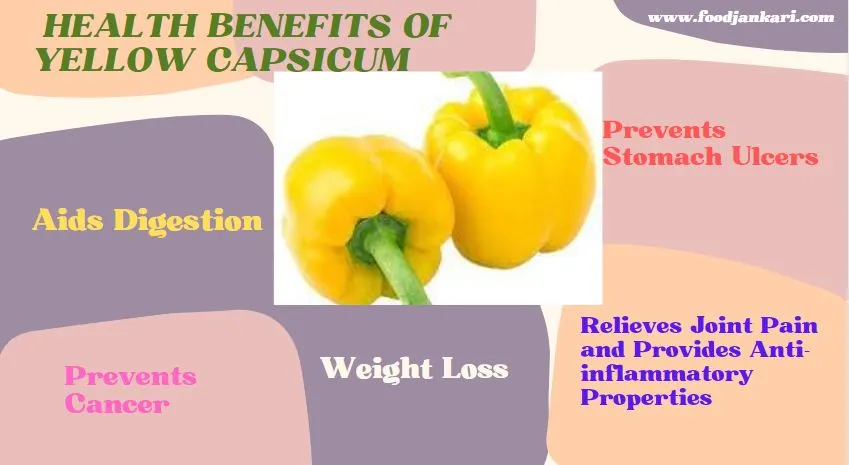
Table of Contents
ToggleYellow Capsicum
Yellow capsicum is rich in vitamin C, which helps to prevent cell damage, boosts immunity and reduces inflammation. It also contains vitamin B6, which regulates blood sugar levels and prevents heart disease by lowering cholesterol levels and high blood pressure. The yellow capsicum also contains potassium which helps to regulate muscle contractions, maintain healthy bones and keep your heart beating regularly.
- First of all, it is rich in vitamins A. It is essential for our immune system and also help with our eyesight.
- Secondly, it is a good source of fiber which is important for maintaining a healthy digestive system.
- Thirdly, it contains a high amount of antioxidants which helps to prevent cancer and other diseases.
- Finally, it has a low caloric value so you can eat as much as you want without worrying about weight gain!
These are not the only yellow capsicum benefits; we have discussed in details the main 5 health benefits of yellow capsicum. Read the below article to know more:
Introduction: What is Yellow Capsicum?
The yellow capsicum is the most common variety of capsicum in the world. It is a cultivar of the species “Capsicum annuum”. The fruit grows to be between 4 to 6 inches in length and has a thin and smooth skin, which ranges from green to red, depending on the maturity level. The flesh is usually yellowish-white and has a flavour that ranges from mild to hot.
Yellow Capsicums (also called yellow Shimla mirch) are often used as a substitute for bell peppers because they are less expensive than other types of peppers, but they can be used in many recipes where bell peppers would be more appropriate. They are also often used in Mexican dishes such as salsa or tacos because they have a similar flavor profile.
It is yellow in color because it contains a high amount of carotenoids, which are natural pigments that give the fruit its distinctive yellow color. They are usually harvested when they are still green and then ripened to a bright yellow color.
How To Include Yellow Capsicum in Your Diet
You might be wondering what the yellow shimla mirch benefits and why you should you include it in your diet. Well, there are many benefits to this little vegetable.
If you want to include more of this vegetable in your diet, then you should consider trying out some of these recipes.
- Roasted Yellow Capsicum with boiled potatoes
- Yellow Capsicum sabzi with potatoes
- Yellow Capsicum and Tomato Soup
- Yellow Capsicum In Home-made pasta
- Yellow Capsicum In Vegetable Pulao
5 HEALTH BENEFITS OF YELLOW CAPSICUM:
- Aids Digestion: The yellow capsicum aids the digestive system by increasing the production of stomach acid, which helps break down food particles. It also helps to reduce gas and bloating.
- Prevents Cancer:The yellow capsicum is also known as the bell pepper or the sweet pepper. It is a very rich source of carotenoids, which are powerful antioxidants that can help to prevent cancer. Capsaicin, the chemical compound that gives peppers their spicy taste and smell, has anti-inflammatory properties that can reduce pain and inflammation in the body.
- Weight Loss: The health benefits of yellow capsicum are well-documented. It is a rich source of vitamin C, beta-carotene, and fiber. It also contains capsaicin which helps to lower blood pressure and cholesterol levels and ultimately weight loss. In addition to these properties, the yellow capsicum is low in calories and fat when compared to other vegetables.
Capsicum is an excellent choice for weight loss because it has been shown to reduce hunger pangs and improve satiety levels by increasing the amount of serotonin released in the brain.
Furthermore, it has been found that capsicum can help people lose weight without even trying by suppressing their appetite!
- Prevents Stomach Ulcers: The yellow capsicum or the “golden fruit” is an effective ingredient for a healthy diet. It has a lot of health benefits, one of them being its ability to prevent stomach ulcers. Capsaicin is the compound that gives hot peppers their heat and it stimulates the production of stomach acid. This acid helps break down food in your stomach so you digest it better and prevents stomach ulcers. Capsaicin is known to have anti-inflammatory properties that can help with stomach problems like ulcers and acid reflux.
- Relieves Joint Pain and Provides Anti-inflammatory Properties: The health benefits of yellow capsicum are numerous, but it’s best known for its anti-inflammatory properties. These properties make it an excellent choice for people with joint pain or arthritis. The vitamin C found in yellow capsicum also helps to reduce the severity of colds, flu and other infections.
Vegetable
10 Benefits of Lady Finger │What are the Health Benefits of Okra │Nutrition in Okra
Published
4 months agoon
October 23, 2024By
P.K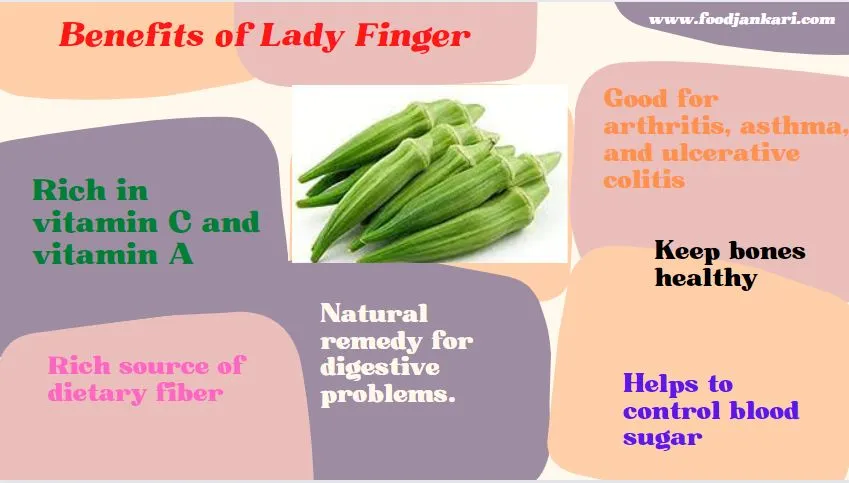
Table of Contents
Toggle10 Benefits of Lady Finger
Okra has long been a staple in the diet of many cultures. It is a type of flowering plant that belongs to the mallow family and is native to Africa and Asia. Okra has been used for centuries as a natural remedy for digestive disorders, constipation, and diabetes. It is also known for its high levels of soluble fiber, which helps to speed up digestion and boost metabolism.
Okra or bhindi is a vegetable that is widely used in Indian cuisine. It has many health benefits and can be consumed raw, boiled or fried.
Here are the 10 benefits of eating lady finger:
1) Okra or bhindi is rich in vitamin C and vitamin A.
2) It helps in digestion as it contains soluble fibre which helps to ease constipation.
3) It helps to control blood sugar as it contains low glycemic index foods.
4) The high level of calcium and potassium also help to decrease the risk of osteoporosis and keep bones healthy.
5) Okra or bhindi also contain folate which helps with cell production, DNA replication, and tissue growth.
6) Okra or bhindi is a rich source of dietary fiber, which helps to maintain a healthy gut microbiome.
7) Okra or bhindi have been found to have anti-inflammatory properties that can help relieve inflammation-related problems like arthritis, asthma, and ulcerative colitis.
8) Okra or bhindi can help improve the body’s ability to absorb iron from other foods.
9) It has been used as a natural remedy for digestive problems and constipation.
10) Okra has lutein, which can help protect against macular degeneration, cataracts, and age-related blindness.
Reasons Why Okra is the Most Incredible Super Food
Okra or Bhindi is also known as Bhendi in many parts of India. The name Okra comes from the word “huluk” which means “lady’s finger”.
This vegetable has been used for centuries by Ayurvedic physicians to treat a variety of ailments such as asthma, arthritis, and diabetes. It also helps with weight loss and detoxification.
Some of the reasons why Okra or Bhindi is the most incredible super food are:
→ Helps with weight loss
→ Helps with digestion
→ Helps with diabetes
→ Helps with detoxification
There are also benefits of okra during pregnancy. It is a good source of fiber, vitamin C, folate, and potassium.
The most incredible advantages of lady finger or lady finger benefits is that it can reduce the risk of colon cancer by up to 75%. This vegetable has the ability to bind to cancer-causing chemicals in the body and eliminate them before they can cause harm.
Okra also helps with weight loss because it contains few calories and it fills you up for a long time. If you’re looking for an easy way to lose weight, just start eating more okra!
How Okra Improves Your Digestion and Fuels Your Metabolism?
Okra is a plant with edible green pods that are usually harvested when they are young. The edible parts of the plant are the immature fruit pods. Okra contains high amounts of soluble fiber, which is important for digestion and metabolism. It is also rich in folate, which helps to lower blood levels of homocysteine, a substance in the blood that can damage blood vessels and lead to heart disease and stroke.
Okra has been used as a natural remedy for digestive disorders such as constipation and irritable bowel syndrome (IBS). It has also been used to help reduce symptoms of arthritis, asthma, high cholesterol levels, etc. The most underrated lady finger vegetable benefits is that it cures diabetes and other conditions that affect the digestive system. What’s okra good for? -So I hope you have understood it well. And, okra benefits for stomach are also there.
Okra Benefits for Eyesight & Eye Health
Okra is a vegetable that contains a lot of Vitamin A and C. Vitamin A can improve night vision.
This also helps with dry eyes, since it acts as an antihistamine.
It contains an antioxidant called beta-carotene, which is a precursor to vitamin A.
It also has lutein, which helps protect the eyes from free radical damage and may help prevent cataracts and macular degeneration.
Okra has been shown to reduce the risk of developing glaucoma by helping to lower pressure in the eye.
Finally, okra contains zeaxanthin, which is a carotenoid that helps protect against age-related macular degeneration and may reduce the risk of developing cataracts.
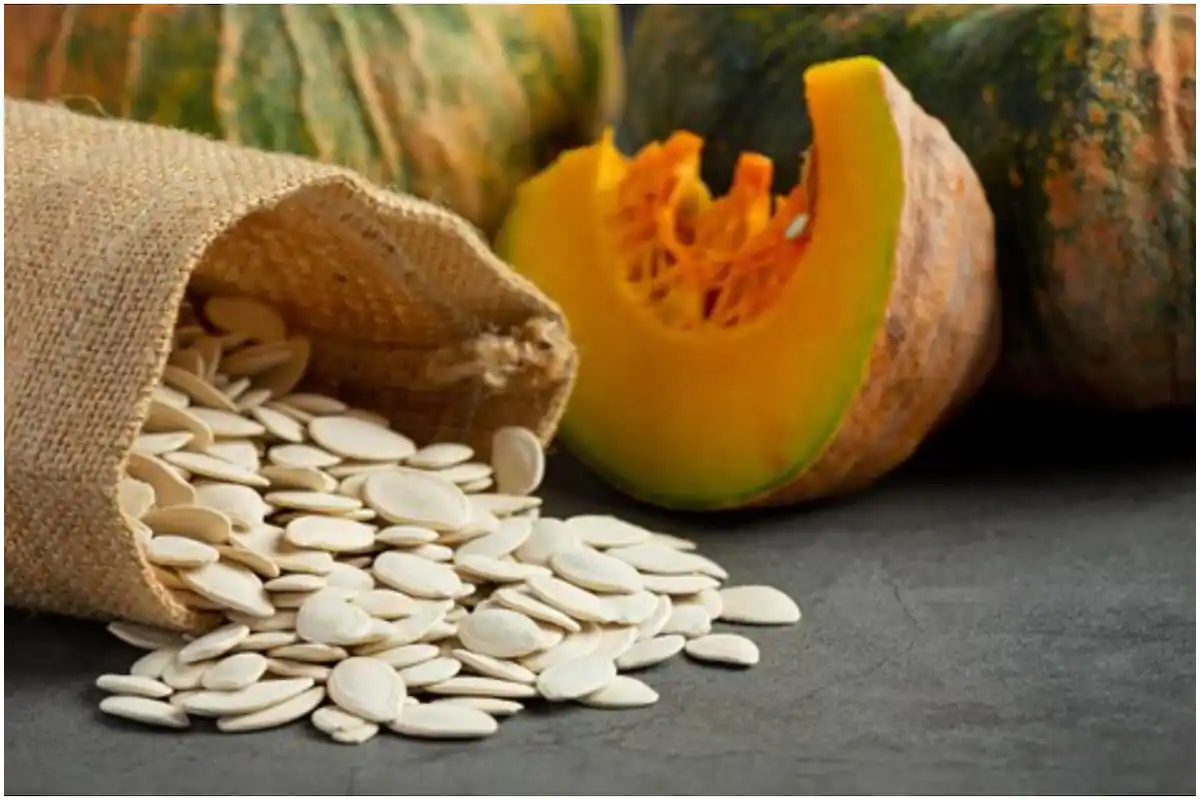
Table of Contents
TogglePumpkin Seed Oil Benefits for Females-
Pumpkin seeds, also known as pepitas, are a treasure trove of health benefits, particularly for women. These tiny, nutrient-packed seeds offer a range of advantages that can support women’s health and well-being. From hormonal balance and heart health to bone strength and immune support, pumpkin seeds are valuable to any woman’s diet.
In this blog, we will delve into the incredible health benefits of pumpkin seeds tailored explicitly to women. We will explore their rich nutrient profile, role in promoting hormonal balance, and how they contribute to heart health. We’ll also discuss their impact on bone health and their immune-boosting properties. Furthermore, we’ll uncover their potential in managing menopause symptoms and enhancing hair and skin health.
We’ve got you covered if you’re curious about incorporating pumpkin seeds into your diet or looking to maximize their benefits. We’ll provide tips on including pumpkin seeds in your meals and share delicious recipes to inspire you.
So, let’s embark on a journey to discover how pumpkin seeds can support and enhance women’s health. Get ready to unlock the potential of these tiny yet mighty seeds and reap the rewards they offer.
Nutrient Profile of Pumpkin Seeds-
Pumpkin seeds may be tiny, but they pack a powerful nutritional punch. These small seeds are rich in essential nutrients that can provide numerous health benefits. Let’s explore the nutrient profile of pumpkin seeds and understand why they are considered a nutritional powerhouse for women.
- Essential Fatty Acids: Pumpkin seeds are an excellent source of healthy fats, including omega-3 and omega-6 fatty acids. These fats support hormonal balance, reduce inflammation, and promote heart health.
- Protein: Pumpkin seeds are a good source of plant-based protein. They provide all the essential amino acids required for the body’s growth and repair processes. Adequate protein intake is necessary for muscle maintenance, tissue regeneration, and hormone production.
- Fiber: Pumpkin seeds are loaded with dietary fiber, which aids in digestion and helps maintain a healthy weight. Fiber also promotes satiety, keeping you fuller for longer and supporting healthy blood sugar levels.
- Vitamins and Minerals: Pumpkin seeds are a rich source of several vitamins and minerals. They contain high levels of vitamin E, which acts as an antioxidant, protecting cells from damage. Additionally, pumpkin seeds are rich in minerals like magnesium, potassium, iron, and zinc, vital for various bodily functions, including bone health, immune support, and energy production.
- Antioxidants: Pumpkin seeds are packed with antioxidants that help fight free radicals and reduce oxidative stress in the body. These antioxidants can positively impact overall health, lowering the risk of chronic diseases.
Pumpkin Seeds and Female Hormonal Health-
Maintaining hormonal balance is essential for women’s overall health and well-being. Pumpkin seeds can play a significant role in supporting hormonal balance due to their unique nutritional composition. Let’s explore how pumpkin seeds can contribute to female hormonal health.
- Zinc: Pumpkin seeds are an excellent source of zinc, a mineral that plays a vital role in hormone regulation. Zinc helps the body produce and balance hormones, including estrogen and progesterone, essential for menstrual cycle regulation and overall reproductive health.
- Phytoestrogens: Pumpkin seeds contain phytoestrogens, which are plant compounds that mimic the effects of estrogen in the body. These compounds can help balance estrogen levels, particularly during hormonal fluctuations such as menopause. By exerting a mild estrogenic influence, phytoestrogens can alleviate menopausal symptoms like hot flashes, mood swings, and night sweats.
- Magnesium: Pumpkin seeds are a good source of magnesium, a mineral that plays a role in hormone synthesis and regulation. Adequate magnesium levels can help reduce menstrual cramps, support healthy sleep patterns, and promote relaxation, all contributing to hormonal balance.
- Omega-3 Fatty Acids: The omega-3 fatty acids found in pumpkin seeds have anti-inflammatory properties and can help reduce inflammation in the body. Inflammation can disrupt hormonal balance, so consuming foods rich in omega-3s, like pumpkin seeds, may help promote hormonal equilibrium.
The Cardiovascular Benefits of Pumpkin Seeds-
Regarding heart health, pumpkin seeds can be a valuable addition to your diet. These nutritious seeds offer several cardiovascular benefits that can help support a healthy heart. Let’s explore how pumpkin seeds contribute to heart health:
- Heart-Healthy Fats: Pumpkin seeds are a rich source of heart-healthy fats, including monounsaturated and polyunsaturated fats. These fats help reduce LDL cholesterol levels (the “bad” cholesterol) and increase HDL cholesterol levels (the “good” cholesterol), promoting a healthier lipid profile and reducing the risk of heart disease.
- Plant Sterols: Pumpkin seeds contain plant sterols, compounds that have been shown to help lower LDL cholesterol levels. Plant sterols contribute to improved cardiovascular health and reduced risk of heart disease by inhibiting cholesterol absorption in the intestines.
- Magnesium: Pumpkin seeds are a good source of magnesium, a vital mineral in maintaining heart health. Magnesium helps regulate blood pressure, relaxes blood vessels, and supports proper heart rhythm. Adequate magnesium intake has been associated with a lower risk of cardiovascular diseases, including heart attacks and strokes.
- Antioxidants: Pumpkin seeds are rich in antioxidants, including vitamin E and phenolic compounds. These antioxidants help protect against oxidative stress and inflammation, both of which contribute to the development of heart disease. Pumpkin seeds promote a healthier cardiovascular system by reducing oxidative stress and inflammation.
- Fiber: The high fiber content of pumpkin seeds can also contribute to heart health. Dietary fiber helps lower cholesterol levels, regulates blood sugar levels, and promotes healthy weight management, crucial for cardiovascular well-being.
Pumpkin Seeds for Stronger Bones-
Maintaining strong and healthy bones is essential, especially for women more prone to osteoporosis. Pumpkin seeds can play a role in promoting bone health and preventing osteoporosis due to their nutrient content. Let’s explore how pumpkin seeds contribute to stronger bones:
- Calcium:Pumpkin seeds are a good source of calcium, a mineral essential for bone health. Calcium is a building block of bones and helps maintain their structure and strength. Consuming pumpkin seeds can contribute to your daily calcium intake, supporting developing and maintaining strong bones.
- Magnesium: Pumpkin seeds are rich in magnesium, which works alongside calcium to support bone health. Magnesium helps regulate calcium levels in the body, aids calcium absorption into the bones, and influences bone mineral density. Adequate magnesium intake is crucial for optimal bone health and can help reduce the risk of osteoporosis.
- Phosphorus: Pumpkin seeds also contain phosphorus, another mineral essential for bone formation and maintenance. Phosphorus combines with calcium to create the structural framework of bones and teeth. Including pumpkin seeds in your diet can contribute to sufficient phosphorus intake, supporting bone health.
- Zinc: Pumpkin seeds are a good source of zinc, a mineral that plays a role in bone metabolism and the formation of collagen, a protein essential for bone strength. Zinc deficiency has been associated with decreased bone mineral density, so consuming pumpkin seeds can help ensure an adequate intake of this mineral for optimal bone health.
- Omega-3 Fatty Acids: The omega-3 fatty acids found in pumpkin seeds have anti-inflammatory properties, which can help reduce inflammation and promote bone health. Chronic inflammation can contribute to bone loss and weaken the skeletal system, so incorporating foods rich in omega-3s, like pumpkin seeds, can be beneficial for maintaining strong bones.
Supporting Digestive Health: Pumpkin Seeds and Gut Function-
Maintaining a healthy digestive system is crucial for overall well-being, and pumpkin seeds can support digestive health. Let’s explore how pumpkin seeds can benefit your gut function:
- Dietary Fiber: Pumpkin seeds are an excellent dietary fiber source, including soluble and insoluble fiber. These fibers add bulk to the stool, promoting regular bowel movements and preventing constipation. Adequate fiber intake is essential for a healthy digestive system and can help prevent digestive issues like bloating, gas, and constipation.
- Gut Microbiome: Pumpkin seeds contain prebiotic fibers that nourish beneficial bacteria in the gut. These fibers pass undigested through the small intestine and reach the colon, where the gut bacteria ferment them. This fermentation process promotes the growth of beneficial bacteria, supporting a healthy gut microbiome and overall digestive function.
- Zinc: Pumpkin seeds are rich in zinc, a mineral that plays a role in maintaining a healthy digestive system. Zinc produces digestive enzymes that break down food and aid in nutrient absorption. Adequate zinc levels support optimal digestion and can help prevent digestive issues like indigestion and poor nutrient absorption.
- Anti-Inflammatory Properties: Pumpkin seeds contain antioxidants and anti-inflammatory compounds that can help reduce inflammation in the digestive tract. Chronic inflammation in the gut can lead to digestive disorders, such as inflammatory bowel disease (IBD) and irritable bowel syndrome (IBS). Including pumpkin seeds in your diet can help reduce inflammation and promote a healthy gut.
- Omega-3 Fatty Acids: Pumpkin seeds are a source of omega-3 fatty acids, which have anti-inflammatory properties and can help reduce inflammation in the gut. Omega-3s also support the production of certain compounds that help regulate gut function and maintain a healthy intestinal lining.
Managing Menopause Symptoms: Pumpkin Seeds for Relief-
Menopause is a natural stage in a woman’s life that often comes with various physical and emotional symptoms. Pumpkin seeds can benefit a menopausal woman’s diet, as they may help alleviate specific symptoms. Let’s explore how pumpkin seeds can offer relief during menopause:
- Phytoestrogens: Pumpkin seeds contain natural compounds called phytoestrogens, which are plant-based substances that mimic the effects of estrogen in the body. During menopause, when estrogen levels decline, consuming foods rich in phytoestrogens, like pumpkin seeds, may help alleviate symptoms such as hot flashes, night sweats, and mood swings.
- Omega-3 Fatty Acids: Pumpkin seeds are a good source of omega-3 fatty acids, which have been shown to help reduce inflammation and promote hormonal balance. Including omega-3-rich foods like pumpkin seeds in your diet may help manage symptoms like joint pain, mood swings, and cognitive changes that can occur during menopause.
- Magnesium: Pumpkin seeds are a rich source of magnesium, a mineral that plays a crucial role in various bodily functions. During menopause, magnesium can help support bone health, relieve muscle cramps and spasms, and reduce anxiety and insomnia. Consuming pumpkin seeds, which are naturally high in magnesium, can contribute to maintaining optimal magnesium levels in the body.
- Sleep Support: Menopause can often disrupt sleep patterns, leading to insomnia or restless nights. Pumpkin seeds contain the amino acid tryptophan, which can promote better sleep by aiding in the production of serotonin and melatonin, hormones that regulate sleep. Incorporating pumpkin seeds into your evening routine may help promote more restful sleep during menopause.
- Nutrient Density: Pumpkin seeds are packed with essential nutrients like vitamins, minerals, and antioxidants, necessary for overall health and well-being. During menopause, when nutritional needs may change, consuming nutrient-dense foods like pumpkin seeds can provide the body with the essential vitamins and minerals for optimal functioning.
Enhancing Hair and Skin Health: Pumpkin Seeds for Beauty-
Pumpkin seeds offer health benefits and can enhance the health and appearance of your hair and skin. Let’s explore how pumpkin seeds can promote beauty:
- Essential Nutrients: Pumpkin seeds are rich in vital nutrients like vitamins A, E, and C, zinc, and omega-3 fatty acids, all beneficial for hair and skin health. These nutrients help nourish the scalp, promote hair growth, and support the production of collagen, a protein that maintains the elasticity and youthful appearance of the skin.
- Hair Growth and Strength: Pumpkin seeds contain nutrients like zinc and vitamin C, crucial in maintaining healthy hair growth and strength. Zinc helps regulate sebum production, an oily substance that moisturizes the scalp and prevents hair from becoming dry and brittle. Vitamin C is an antioxidant that aids in collagen synthesis, promoting strong and resilient hair.
- Scalp Health: A healthy scalp is essential for maintaining beautiful hair. Pumpkin seeds are rich in antioxidants and nutrients that help soothe and nourish the scalp, reducing issues like dryness, itchiness, and dandruff. A balanced and well-nourished scalp creates a favorable environment for healthy hair growth.
- Skin Radiance: The antioxidants in pumpkin seeds help protect the skin from damage caused by free radicals, which can contribute to premature aging. The vitamins and minerals in pumpkin seeds promote skin cell renewal, improving skin texture and radiance. Additionally, the omega-3 fatty acids in pumpkin seeds help maintain skin moisture and reduce inflammation, contributing to a healthy and glowing complexion.
- Skin Repair and Anti-Inflammatory Properties: Pumpkin seeds contain compounds with anti-inflammatory properties, such as omega-3 fatty acids and vitamin E. These properties can help soothe irritated skin, reduce redness, and promote skin repair, making pumpkin seeds beneficial for those with skin conditions like acne, eczema, or psoriasis.
Incorporating Pumpkin Seeds into Your Diet: Tips and Delicious Recipes-
Incorporating pumpkin seeds into your diet is a great way to enjoy their numerous health benefits. Here are some tips and delicious recipes to help you make the most of pumpkin seeds:
- Snack on Roasted Pumpkin Seeds: One of the simplest ways to enjoy pumpkin seeds is by roasting them. Remove the seeds from the pumpkin, rinse them, and pat them dry. Toss them with olive oil, salt, and your choice of seasonings like cinnamon, paprika, or garlic powder. Spread them in a single layer on a baking sheet and roast at 350°F (175°C) for 10-15 minutes until golden brown and crispy. Let them cool, and enjoy them as a crunchy snack.
- Add to Breakfast: Sprinkle a handful of pumpkin seeds over your morning cereal, oatmeal, or yogurt. They will add a delightful crunch and boost the nutritional content of your breakfast. You can also incorporate them into smoothie bowls or blend them into your favorite smoothie for added protein and nutrients.
- Incorporate into Baked Goods: Add a nutritious twist to your baked goods by including pumpkin seeds. Mix them into bread, muffin, or cookie batter for added texture and nutty flavor. For a healthy and convenient snack, consider making pumpkin seed granola bars or energy balls with a combination of oats, dried fruits, and pumpkin seeds.
- Top Salads and Soups: Sprinkle pumpkin seeds over your salads or soups to add a satisfying crunch and extra nutrition. They pair well with leafy greens, roasted vegetables, or creamy soups. You can also use them as a garnish for roasted butternut squash soup or sprinkle them over a mixed green salad with feta cheese and dried cranberries.
- Blend into Homemade Nut Butter: Create your own nutritious and flavorful nut butter by blending roasted pumpkin seeds with other nuts like almonds, cashews, or peanuts. Add a touch of honey or maple syrup for sweetness and a pinch of salt for balance. Spread it on toast, use it as a dip, or add it to your favorite smoothies.
Conclusion: Embracing the Power of Pumpkin Seeds for Women's Well-being
In conclusion, pumpkin seeds are a powerhouse of nutrition with numerous benefits for women’s well-being. Whether you’re looking to support hormonal balance, promote heart health, strengthen bones, boost immunity, or enhance hair and skin health, incorporating pumpkin seeds into your diet can make a significant difference.
Pumpkin seeds contain essential nutrients, including vitamins, minerals, antioxidants, and healthy fats. They offer a range of benefits, from regulating hormonal health to supporting the immune system and promoting radiant hair and skin. Their versatility allows you to enjoy them in various ways, from snacking on roasted seeds to incorporating them into your favorite recipes.
Adding pumpkin seeds to your daily diet allows you to tap into their natural goodness and reap their many rewards. Remember to choose high-quality, organic pumpkin seeds and consume them in moderation as part of a balanced and varied diet.
So, embrace the power of pumpkin seeds and experience their positive impact on your overall well-being. Enjoy their delicious taste, experiment with different recipes, and discover the excellent benefits they offer for women’s health. Make pumpkin seeds a part of your healthy lifestyle and nourish yourself from the inside out.


Discover the Power of Green Apples: Health Benefits You Need to Know

17 Best Foods For Hair Growth And Hair Regrowth: What To Eat, Drink & Avoid

Can We Eat Apple At Night

Apple Cider Vinegar Benefits For Skin

How To Use Apple Cider Vinegar For Skin

Eating Pineapple at Night is Good or Bad? Know the Right Answer

Mosambi (Sweet Lime)- Health Benefits, Nutritional Facts, Calories and Best time to drink Mosambi juice

Which Fruit Is Best For Skin Whitening

Is Guava Good For Diabetes: Benefits, Risks, and Precautions

What Are Health Benefits Of Watermelon? │Nutrition In Watermelon │Calories For Watermelon

Eating Kiwi At Night Is Good Or Bad?

Benefits Of Eating Dry Fruits At Night

Mosambi (Sweet Lime)- Health Benefits, Nutritional Facts, Calories and Best time to drink Mosambi juice

Can We Eat Oranges During Periods?

The Egg is Veg or Non-Veg

Is Eating Grapes at Night Good or Bad? Know the Benefits, Drawback and Grape Snacks
Can We Eat Papaya And Grapes Together?

How Much Papaya Seeds Should I Eat Per Day

17 Best Foods For Hair Growth And Hair Regrowth: What To Eat, Drink & Avoid

Discover the Power of Green Apples: Health Benefits You Need to Know
Trending
-
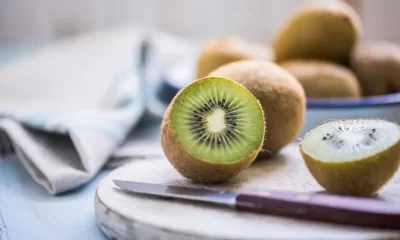
 Fruits4 months ago
Fruits4 months agoEating Kiwi At Night Is Good Or Bad?
-
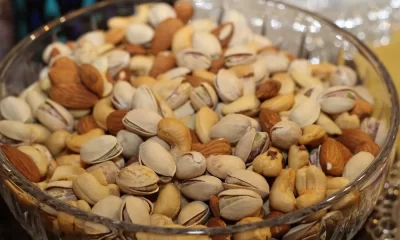
 Nutrition Facts2 years ago
Nutrition Facts2 years agoBenefits Of Eating Dry Fruits At Night
-

 Fruits4 months ago
Fruits4 months agoMosambi (Sweet Lime)- Health Benefits, Nutritional Facts, Calories and Best time to drink Mosambi juice
-

 Health benefits of Juice4 months ago
Health benefits of Juice4 months agoCan We Eat Oranges During Periods?
-

 Nutrition Facts2 years ago
Nutrition Facts2 years agoThe Egg is Veg or Non-Veg
-

 Fruits4 months ago
Fruits4 months agoIs Eating Grapes at Night Good or Bad? Know the Benefits, Drawback and Grape Snacks
-
Fruits2 years ago
Can We Eat Papaya And Grapes Together?
-
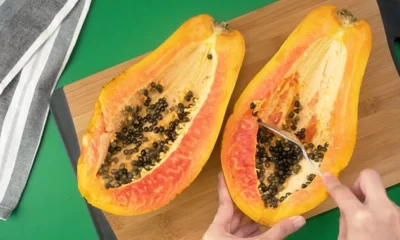
 Fruits4 months ago
Fruits4 months agoHow Much Papaya Seeds Should I Eat Per Day
